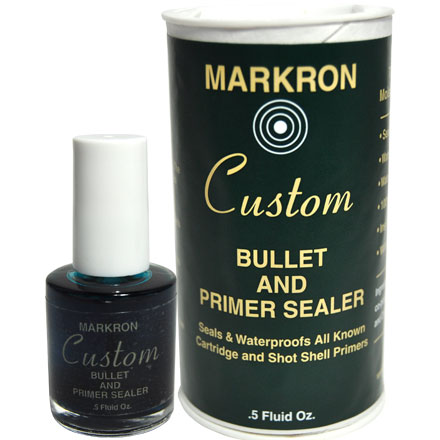A few factory “tricks” can be applied to handloads, if you feel a need. READ MORE

Glen Zediker
Last time we took a look at some of the differences between factory-loaded ammo and our own recipe handloads. That material wasn’t a total indictment on factory ammo as might have been expected coming from me and directed toward mine, and that’s because there are some times ready-made has its place.
One of the main-most good things that can be said about factory ammo is that it has a shelf life that, given decent storage conditions, will likely exceed that of handloads. Or not. “Not” depends on what steps or processes were applied to the handload.
Sealants
The main culprit in decreasing stored life of a loaded round results from corrosion. Some call it “sticktion,” and I’ve had it happen a few times. What it is, is the case neck and bullet corrode — stick — together. That will elevate pressure. I had a rash of blown primers from the batch I used.
There are a few ideas on how to reduce or eliminate stiction, and the first starts with eliminating the catalyst for the corrosion. Don’t touch the bullets with your bare fingers! Don’t touch the cases either. I know a few commercial loaders who produce precision ammunition and they’re all about surgical-style gloves.
I have run some tests using bullet sealant (applied as a liquid then UV-cured) and such a product will, indeed, virtually eliminate any worries over corrosion. Most factory, and virtually all mil-spec, ammo uses some formulation of sealant (bullets and primers). The reason I tried it, though, was because of the promise of greater accuracy. Glued bullets tend to produce from a little to a lot smaller velocity spreads. My jury is still out on the value of this additional step, and when there’s a verdict I’ll let you all know how it played out.

There are a few different bullet and primer sealers available. For the most part, these are fairly easy to apply and none are what I’d call expensive.
Giving loaded rounds a good cleaning, and then storing them at the least in air-resistant boxes, keeps the shine on and the corrosion away for a good long while.
Some run their loaded rounds in a routine-type case cleaner, like a vibratory tumbler. That’s all good, but I suggest not using anything but “pure” media to ensure that no residues are left behind.
I use denatured alcohol and a bath towel: place the rounds on half the towel, pour on the alcohol, fold over the towel and roll the rounds around. Let them dry and box them up.
Handling precautions during round assembly and then good storage afterward extends the shelf life of reloads.
More about another factory trick — crimping — next time.
The preceding is a adapted from information contained in from Glen’s books Top-Grade Ammo and Handloading For Competition. Available HERE at Midsouth Shooters Supply. Visit ZedikerPublishing.com for more information on the book itself, and also free article downloads.








